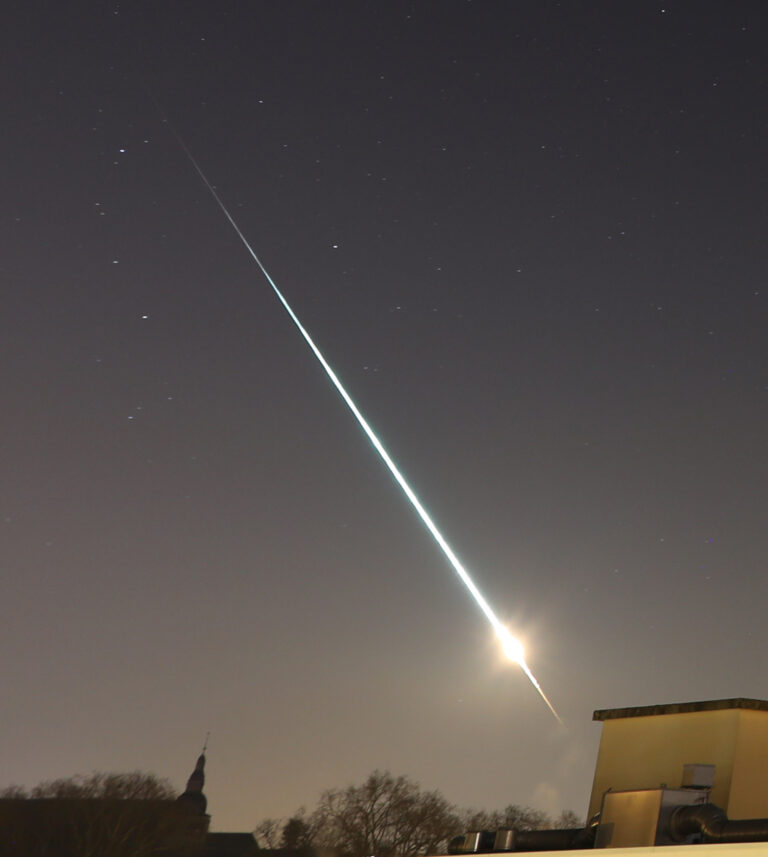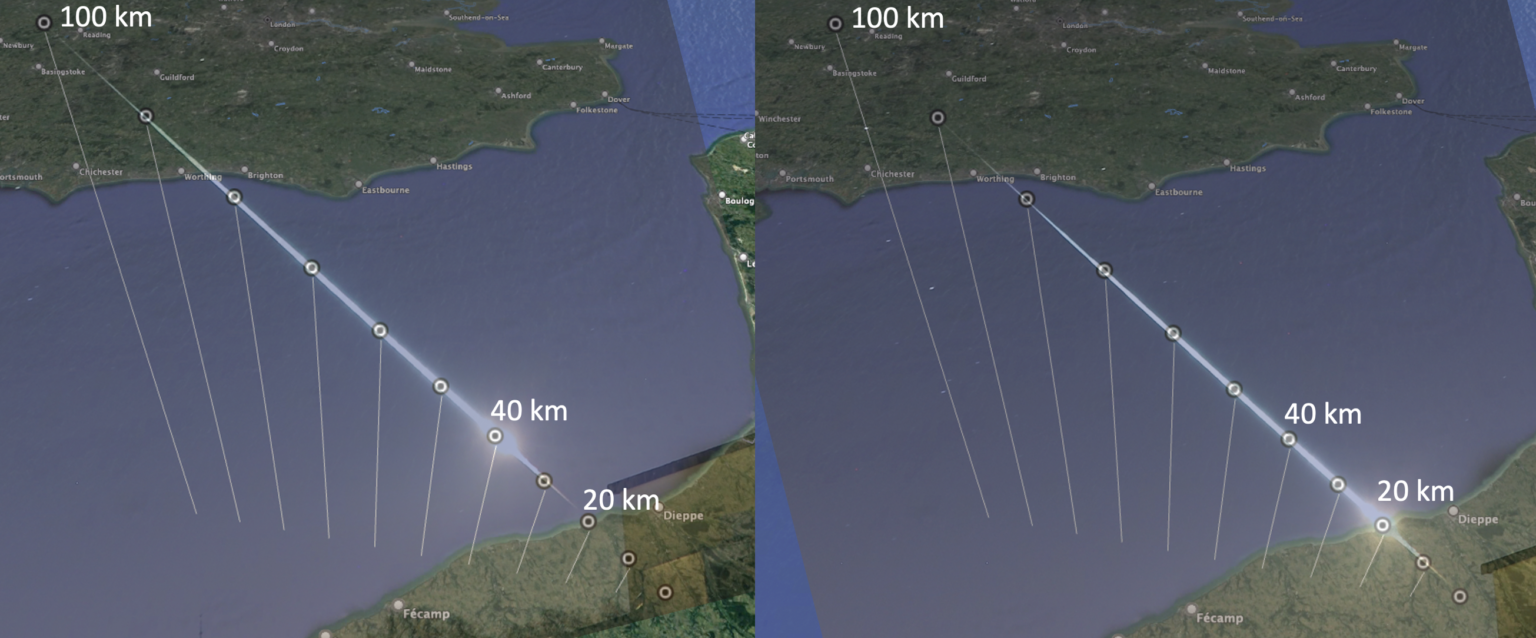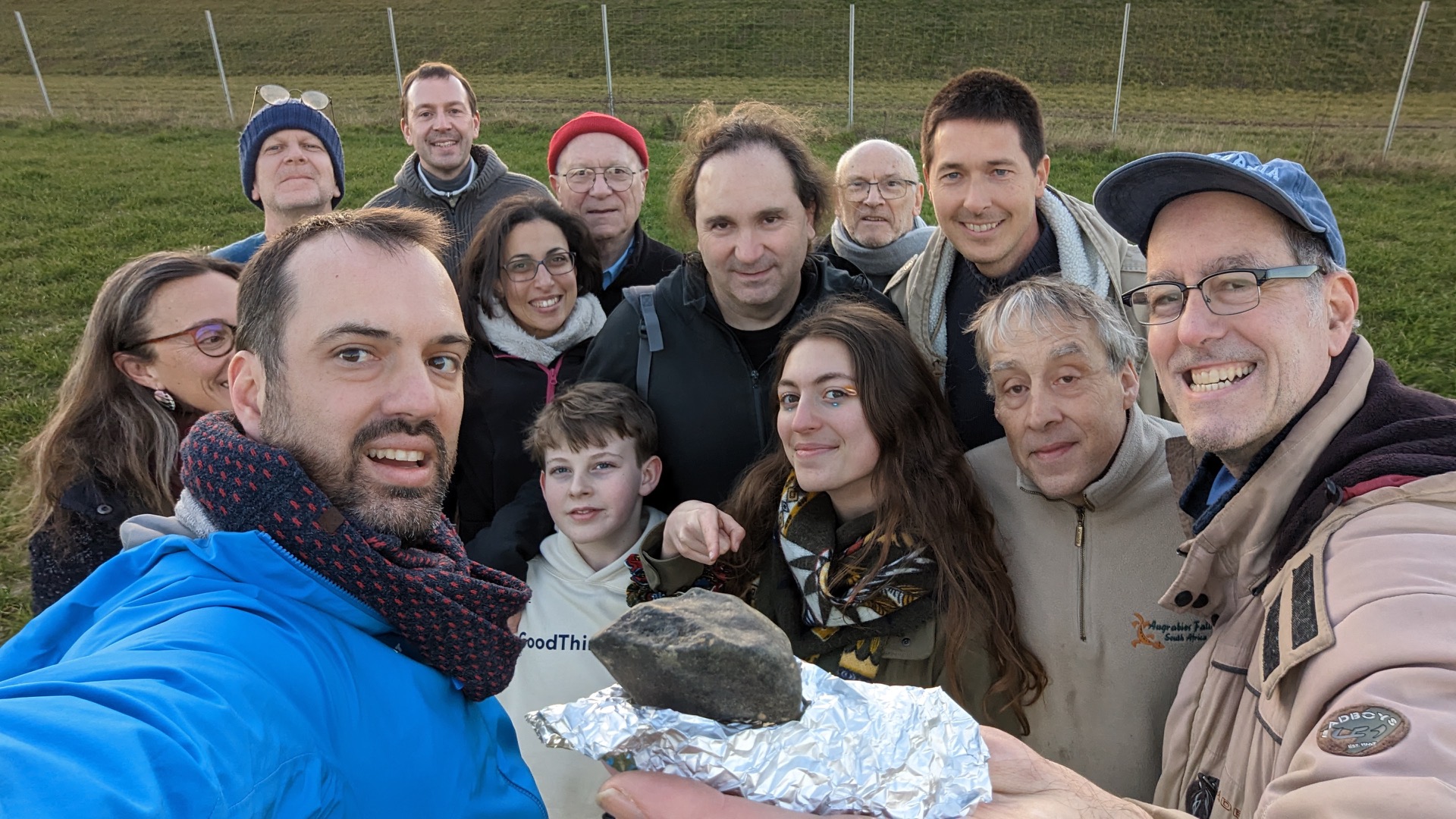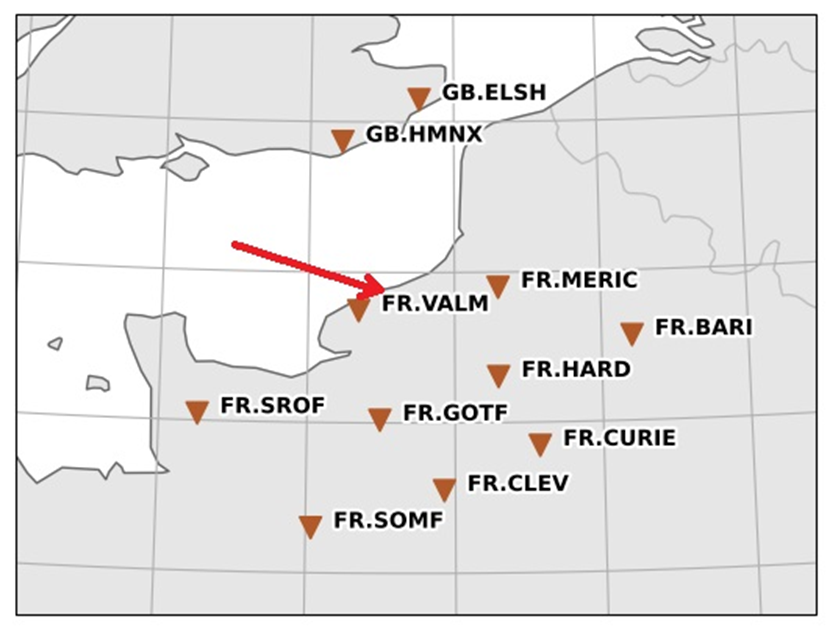In the early hours of 13 February a fireball lit up the skies over Normandy, France, due to the predicted atmospheric entry of asteroid 2023X1. An international team from France, Canada, Australia and the US reconstructed a strewn field based on available observations where meteorites might have impacted. Search teams conducted the first searches and successfully recovered the first meteorite on their first field day. It is third meteorite in history that has been recovered after it was detected in space before entering the atmosphere and the first to be found in France by the FRIPON/Vigie-Ciel network. In this long read we give you a first look into the road from detection to meteorite recovery.
A small asteroid (absolute magnitude of 32.7, or about 1 m in diameter) was discovered today by the GINOP KHK program (K88, in Piszkéstető, Hungary), and confirmed a few hours later by the Visnjan observatory (L01, in Tican, Croatia). The asteroid with the provisional name Sar2667, was predicted to intersect the obit of the Earth. Asteroids of this size are harmless and will burn up in the atmosphere as an impressive fireball. However, some fragments could potentially survive this atmospheric entry and might therefore be found as meteorites on the ground. This event is the 7th time that astronomers have discovered an asteroid before it entered our atmosphere. The first in 2008 was asteroid 2008 TC3, while the last similar event is much more recent, with the atmospheric entry of 2022 WJ1 (1.5 m in diameter) above Canada on 19 November 2022. Visit the Vigie-Ciel website for more images and videos of the fireball.

Confirmation of meteorite impact
Researchers initially thought that the fragments that survived would end up in the English Channel; but after verifying and checking numerous sources (images from telescopes obtained several hours before entering the atmosphere – at a distance close to that of the Moon; security videos; videos from numerous amateurs and FRIPON data), the calculations made by Peter Jenninskens (SETI – USA), Denis Vida (UWO, Canada), Auriane Egal (UWO and Space for Life, Montreal) and Hadrien Devillepoix (DFN – Australia) showed that meteorites would have impacted in an area between Dieppe and Doudeville.

Observations made available to the scientific community were processed by a team from JPL/CalTech, NASA to determine the orbit of the asteroid and the point of impact in collaboration with Peter Jenniskens, SETI institute, USA. Several aspects suggested that meteorites could have survived this fall: the initial mass of the object (1.5 tons, if we assume a density of 3000 kg/m3) for an object whose size would be one meter in diameter according to the telescopic data) and the initial speed which is 14.5 km/s also according to the telescopic data. The excitement grew with amateur and professional communities in France and abroad to assess these data and thus confirm if meteorites would indeed have survived. By using image data from the many amateur cameras that recorded the event, Denis Vida’s team (UWO, Canada) found fall parameters similar to those of the American team (SETI and JPL).
Successful recovery of meteorites
Following the observation of a fireball in Normandy and the strewn field predictions, the FRIPON/Vigie-ciel team quickly mobilized its network and deployed to the strewn field to set up a search and recovery campaign. A field team consisting of researchers and passionate amateurs met on Wednesday morning in the fall zone defined by an analyses of the international team. They set up a campaign, providing information to local inhabitants, requested authorization to access the land, had meetings with the mayors, and identified favourable lands for the conducting the initial research in the field.
On Wednesday afternoon, the search team reported finding a first fragment of the asteroid 2023 CX1 which fell on Monday February 13 in Normandy. At 4:47 p.m. Loïs Leblanc, an 18-year-old art school student member of the team, noticed a dark stone barely level with the ground of a field in the town of Saint-Pierre-le -Viger (Seine Maritime). First assessments made in the field confirm that it is indeed the meteorite. This makes the new meteorite the third in history to have been detected in space before entering the atmosphere. It is also the first to be found in France by the FRIPON/Vigie-ciel network. Currently, ten fragments have been recovered so far.

Additional observations by seismometers and infrasound
During atmospheric entry, the asteroid fragmented at an altitude of about 25 km. A colossal amount of kinetic energy was released and some of this energy dissipated as an acoustic wave which was heard by some witnesses and detected by the French seismograph network RESIF-RLBP. This fragmentation takes place when the atmospheric braking is the most important. Indeed, atmospheric braking is very weak in the upper atmosphere (beyond 70 km) because the atmospheric pressure is very low. The atmospheric pressure increasing exponentially (about a factor of 10 every 10 km), the atmospheric braking becomes maximum around 25-30 km altitude causing the disintegration of the object. The seismic data will be processed in the coming weeks. They will make it possible to quantify the energy released at the time of the fragmentation at the origin of the shock wave.

Infrasound expert Dr. Jelle Assink from the Royal Dutch Meteorological Institute (KNMI) reported on Twitter the observation of the fireball’s infrasound signature using the infrasound sensors located in De Bilt, the Netherlands (~450 km) and CTBTO stations IS26 (~1000 km) in SE Bavaria, Germany and Tunisia (148TN at ~1700 km).
Sources: Entrée imminente d’astéroïde au-dessus de la manche! / Pluie de pierres en normandie! / Une météorite normande issue de 2023 cx1 retrouvée!
Last updated: 19 February
